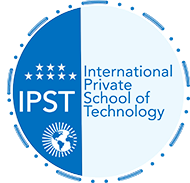In the fast-paced world of digital education, educational platforms and AI applications are playing a significant role in shaping learning methods. With AI-driven tools, we can now customize education to meet the unique needs of each student. This makes the learning process more effective. But is an educational platform still the best choice, or is a personalized AI-enhanced experience the better option? Let’s explore how AI can help determine the best teaching method and whether combining platforms with personal experiences offers the best learning results.
1. Personalized Learning with AI
AI can offer customized learning solutions for each student. By analyzing data like test results and learning pace, AI adjusts content to match individual needs. Platforms like Knewton or DreamBox adjust lessons to suit the student’s level and help improve their skills in areas where they may be struggling.
Source: EdTech Magazine – The Role of AI in Personalized Learning
2. Flexibility of Online Learning Platforms
Online platforms like Coursera, Udemy, and LinkedIn Learning provide students access to courses from top universities and instructors worldwide. Students can choose courses based on their interests and progress at their own pace. However, these platforms still follow a traditional model, where students must commit to set content, which may not work for everyone.
Source: Forbes – How Online Learning Platforms Are Changing Education
3. The Value of Personal Experience in Learning
Research shows that personalized learning, such as direct interaction with teachers and peers, is still essential for effective learning. While AI can improve the learning experience, human interaction is needed for a deeper understanding of complex concepts.
Source: Harvard Business Review – The Future of Learning: Personalized or Human-Centered?
4. Interactive Learning Powered by AI
AI in education also helps make learning more interactive. With tools like intelligent chatbots or apps like Duolingo for language learning, students can get real-time feedback on their progress. These systems engage students and help them learn more interactively.
Source: EdTech Magazine – AI-Powered Interactive Learning Tools
5. Challenges of Relying Fully on AI
Despite AI’s benefits, relying entirely on it comes with challenges. One of the main issues is that AI systems lack emotional factors that motivate students, such as encouragement or social interaction. Also, AI’s data can sometimes be limited or inaccurate, which can affect the effectiveness of learning.
Source: Inside Higher Ed – The Challenges of AI in Education
6. Combining Educational Platforms and Personal Experience
The best learning method may be a combination of AI-driven platforms and personalized experiences. By combining the flexibility of digital platforms with human supervision, we can create a more balanced learning environment. AI can track student progress, while teachers can provide emotional support and guidance when needed.
Source: Forbes – Blended Learning: The Future of Education
Conclusion
In the near future, AI will continue to play a key role in shaping education. While platforms are still valuable for accessing global content, personalized experiences and human interaction will remain vital. Combining both approaches can enhance learning, making it more customized and effective.
Sources: EdTech Magazine, Forbes, Harvard Business Review, Inside Higher Ed
 International Private School of Technology المدرسة الدولية الخاصة للتكنولوجيا Private School مدرسة خاصة للتكوين المهني
International Private School of Technology المدرسة الدولية الخاصة للتكنولوجيا Private School مدرسة خاصة للتكوين المهني


